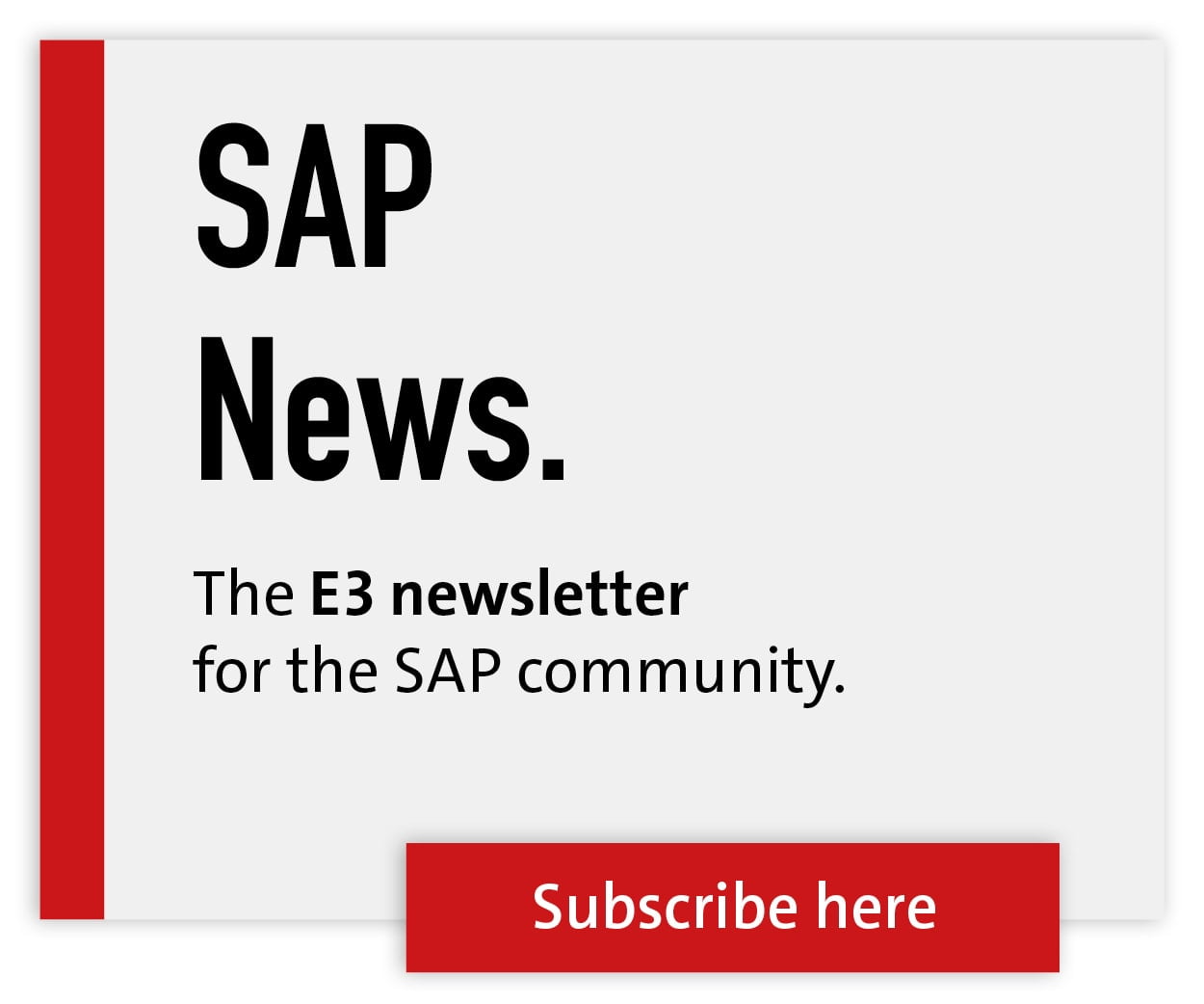The Limits of the SAP S/4 Standard as an Opportunity


A modern ERP system such as SAP S/4 Hana is the foundation for efficient business processes and digital transformation. It offers a powerful standard that supports companies worldwide in managing central processes. However, it quickly becomes apparent, especially in complex organizations, that the standard is not always sufficient to map the entire reality of a company. Individual market requirements, industry-specific characteristics or a company's own innovation strategies require extensions that go beyond the core.
This situation often leads to an apparent paradox: despite high investments in the standard S/4 system, companies must also build up their own developments. While this may seem inefficient at first glance, in practice it proves to be a decisive lever for differentiating oneself from the competition and being able to react more quickly to new requirements.
Limits of the standard
S/4 covers many processes comprehensively - from finance and procurement to production. However, as soon as companies want to map complex scenarios such as cross-location logistics chains, customer-specific product configurations or automated service processes, the standard reaches its limits. Resorting to „workarounds“ or system breaks often leads to inefficient processes that counteract the original investment in the ERP system.
It is precisely at this point that the strategic need to think about our own developments becomes apparent. They are not a sign that the system is inadequate, but rather an expression of the desire to optimize processes individually and thus secure competitive advantages. It is crucial that companies do not interpret the limitations of the standard as a weakness, but rather as an opportunity to critically reflect on their own process architecture. In many cases, targeted additions can not only overcome bottlenecks, but also open up new business models. In this way, a supposed limitation becomes an opportunity for further development. It should also be noted that standardization is deliberately aimed at what is common and recurring.
It can hardly take into account all industry-specific characteristics or corporate cultural peculiarities. What is required in mechanical engineering differs from the requirements of a retail group or a utility company. Here, it is important to precisely analyze one's own needs and align extensions in such a way that they support the company's specific differentiation factor. Not every need justifies an in-house development, but where there is strategic relevance, a departure from the standard is unavoidable.
Clean Core as a guiding principle
The main challenge is to implement these extensions in such a way that the system's update capability is maintained. This is because every modification to the core system jeopardizes future release upgrades and increases operating costs in the long term. This is where the clean core concept comes in: Individualizations are consistently implemented outside the ERP core. The SAP Business Technology Platform (BTP) provides the necessary framework. It acts as a development and integration environment that allows customized applications, interfaces and analyses to be implemented - without jeopardizing the stability of the core system.
Clean Core is therefore not just a technical paradigm, but a strategic guiding principle for sustainable ERP management. It forces companies to critically examine their extensions and make clear distinctions: Which functions belong in the standard, which should be deliberately outsourced, and which can be implemented more elegantly using platform services? Another advantage of the clean core approach lies in governance. The clear separation of core and extensions creates transparency as to which adjustments have been made and how they affect the overall architecture. This enables companies to create consistent documentation and prevent uncontrolled in-house developments from creeping into the landscape. In this way, the long-term manageability of the system is strengthened - an aspect that is becoming increasingly important in times of shortened innovation cycles.
In addition, a clean core strategy opens up the possibility of adapting innovations more quickly. As the core remains untouched, new releases can be implemented without extensive migration projects. At the same time, the developed extensions are still available, which allows a continuous evolution of the IT landscape. This creates a balance between reliability and flexibility, which is crucial in a dynamic market environment.

SAP BTP as an extension of the Clean Core.
The building blocks of the BTP
The Business Technology Platform offers various components that companies can use in a targeted manner to solve their specific challenges:
SAP bundles its low-code/no-code tools for app development, automation and visual process modeling under SAP Build. Individual applications or workflows that map specific requirements are created here - be it an app for production employees, a customer portal or an add-on for the supply chain. The advantage: these solutions can be developed quickly and expanded flexibly without interfering with the S/4 core.
Many companies do not work exclusively with SAP systems. With the SAP Integration Suite, external applications, cloud services or IoT devices can be seamlessly integrated. This enables end-to-end processes and ensures that data flows in real time. Decisions are increasingly based on data. The SAP Business Data Cloud provides powerful tools to merge data from different sources, process it semantically and make it available in the form of dashboards or data products. This enables companies to gain deeper insights and control their processes in a data-driven manner.
SAP Business AI comprises a wide range of AI solutions and allows patterns to be recognized, predictions to be made and processes to be controlled automatically. Whether in sales planning, customer service or quality control - companies can implement innovative scenarios that go far beyond the standard.
Practice shows how valuable this modular approach is. One example: an international manufacturer wants to digitally map specific manufacturing processes that are not provided for in the standard system. Application development is used to create customized apps that can be used directly on tablets or machine monitors - and are closely linked to the ERP system. Or: a retail company wants to integrate external supplier systems in order to compare stocks in real time. With the Integration Suite, this is possible without complex interface projects, which not only saves time but also significantly increases process quality.
In both cases, companies benefit from the fact that their individual solutions run independently of the core system. This means that updates to new S/4 releases are not blocked and investments in in-house developments remain protected in the long term. The true value of BTP lies in the combination: companies can rely on the stable S/4 standard on the one hand, but can also flexibly develop and operate their own extensions on the other. The result is a balance between agility and stability. Especially in times of rapid market changes and growing customer requirements, this flexibility becomes a decisive success factor.
Companies that set up their ERP landscape in this way are able to implement innovations promptly without sacrificing the reliability of their core system. At the same time, the clean-core approach protects investments in the long term and ensures that overall costs do not get out of hand.
Conclusion:
Investing in a standard ERP system such as S/4 is an important step on the path to digital transformation. However, it is only the intelligent combination of standard and individual enhancements that gives companies the opportunity to make their processes truly future-oriented. The SAP Business Technology Platform provides the decisive foundation for this: it enables customized developments, seamless integration, data-driven control and innovative AI scenarios - all outside the ERP core and in line with the clean core principle. Companies that follow this path ensure that they not only work efficiently today, but are also able to react quickly to new challenges tomorrow. The combination of stability and flexibility thus becomes the engine of sustainable success.
Continue to the partner entry:





